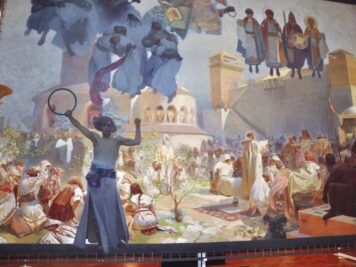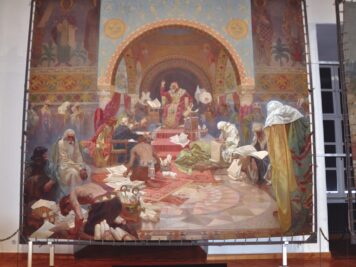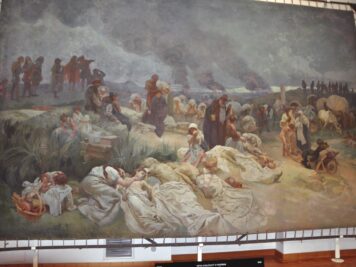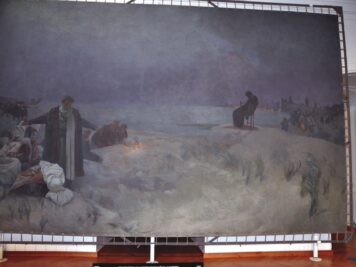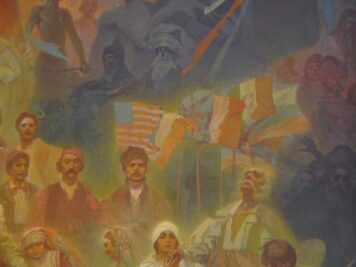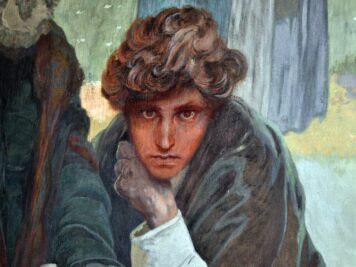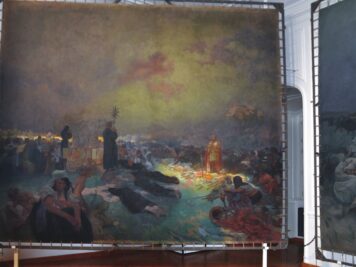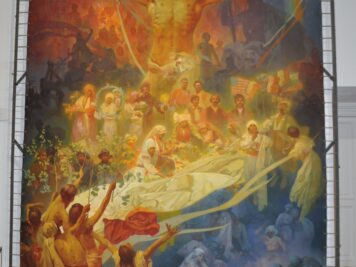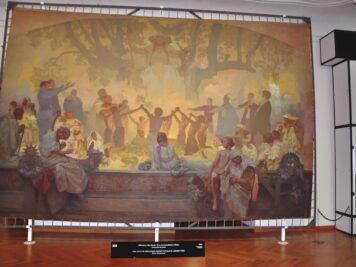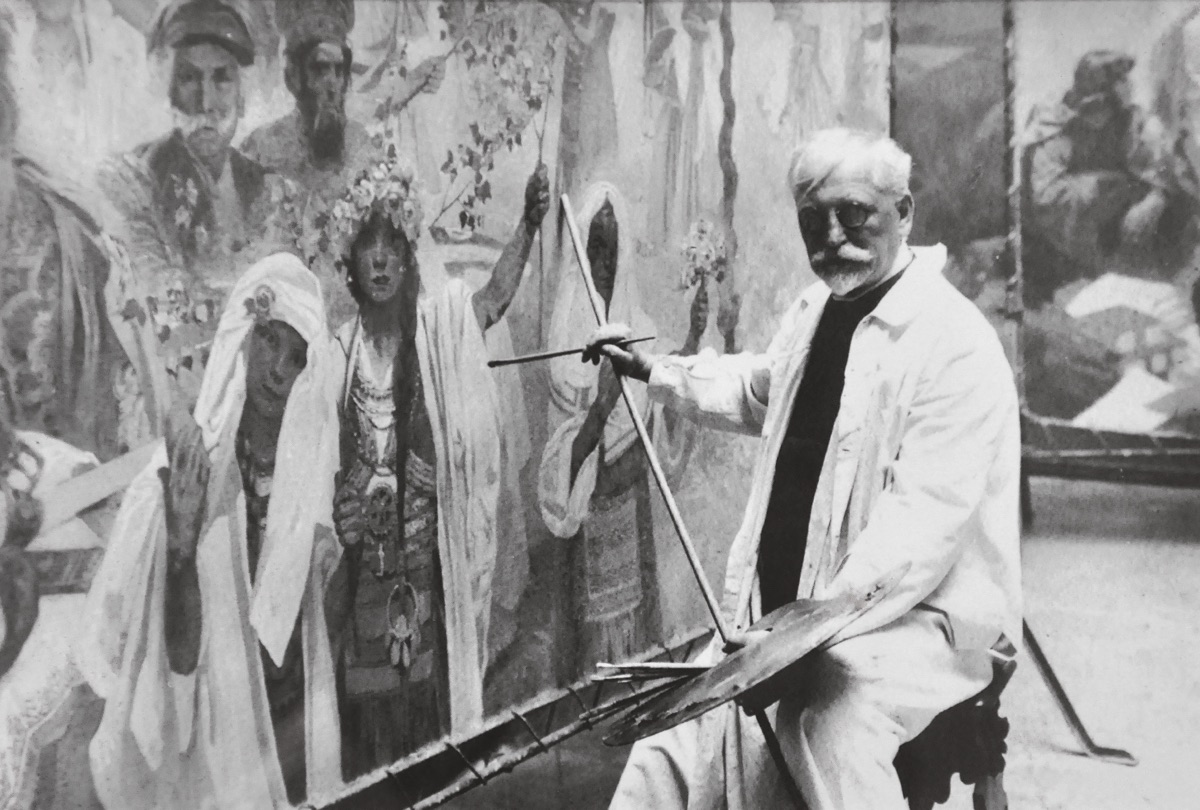
Alphonse Mucha (1860-1939), a South Moravian native, is renowned as a famous painter, and an icon who has inspired generations of artists worldwide. While in Prague in 1929, he wrote the following words about his work, the Slav Epic.
Text: M.Zisso; Photo: Archive
“It was as early as 1900, that I decided to devote the second half of my life to work that would help to build up and strengthen the sense of national identity in our country.
I am convinced that every nation can only continue to develop successfully if its growth is incessantly and organically connected to its roots and that the knowledge of one’s history is essential for maintaining this connection.
Our literature offers us beautiful works that present the course of our history – sometimes glorious, sometimes sad – to the inner sight of our people.
Even music, symphonies and cycles connected to our history awaken the love for our homeland through art. I wanted to speak to the nation’s soul in my own manner, through the bodily miracle that carries the impressions to consciousness the fastest.
I would say that the image works forcefully: it can penetrate the soul through the window of an open eye.
It is up to the observer to deal with the perception as they wish. They can dismiss it, not fully acknowledging its existence, or they can get seduced by its alluring exterior, stop in front of the sight and perhaps even search for its meaning and significance, eventually finding the core from which it arose, be it beauty or truth.
I considered this, now completed, work to be my duty. However, it would be impossible to carry out such an enormous endeavour without material support.
My friend, Mr Charles R. Crane, who, although American, harbours a great love for Pan-Slavism, understood my efforts and helped me realise my dream. In 1910 in Chicago, we agreed that he would help carry the costs associated with my work, which would then be given as a gift to the city of Prague.
In all the paintings, I steered clear of everything that could resemble harsh quarrels and the blood spilt during such altercations.
The purpose of my work has never been to destroy but to create constantly, to build bridges because we must all seek solace in the hope that all of humanity will become closer, all the easier, if they know each other well.
I will be happy if I am allowed to contribute to spreading this knowledge with my modest share – at least for now among us, in our Slavic family.”
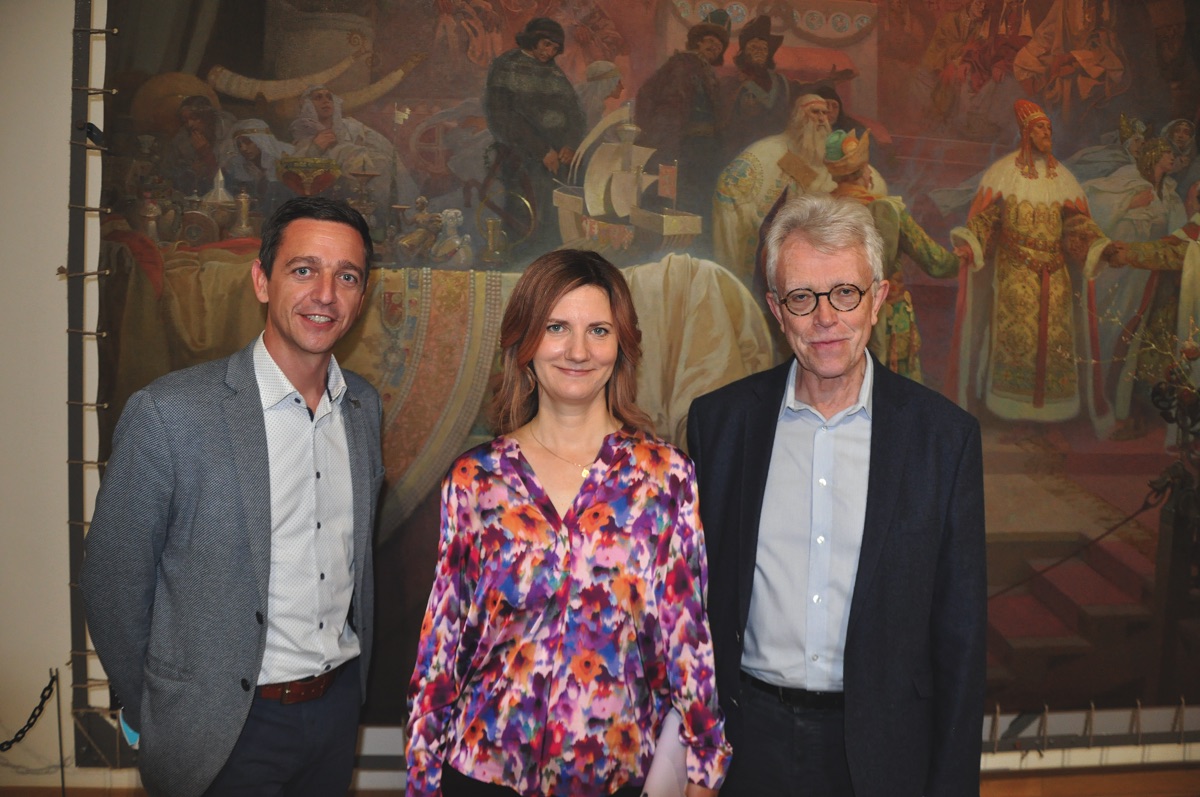
From right: John Mucha, Alphonse Mucha ́s grandson; Markéta Vaňková, Mayor of Brno; and Jan Grolich, Governor of the South Moravian Region
On 10th May 2024, a memorandum regarding the joined cooperation between the city of Brno and the Mucha Foundation was signed, relating to the presentation of the artistic estate of Alphonse Mucha, as well as all the places connected with him. This was signed by his grandson, John Mucha, and the Mayor of Brno, Mrs. JUDr. Markéta Vaňková, at Moravský Krumlov Castle.
This ceremony was also attended by the Governor of South Moravia, Mgr. Jan Grolich, Senator and Mayor of Moravský Krumlov, M.Sc. Tomáš Třetina, Alphonse Mucha’s great grandson, Marcus Mucha, and many ambassadors and members of the Diplomatic Corps. The ceremony was followed by a remarkable tour of the Slav Epic led by John Mucha, Alphonse Mucha’s grandson.
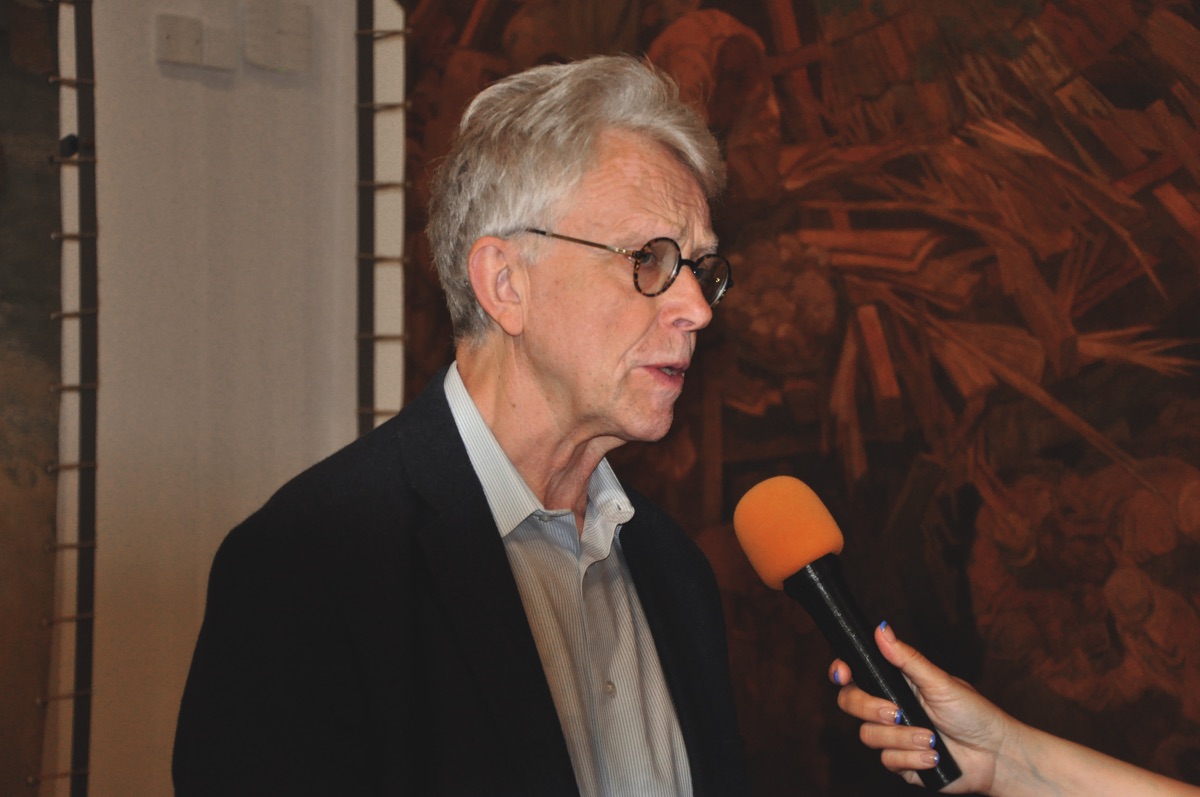
John Mucha, Alphonse Mucha ́s grandson
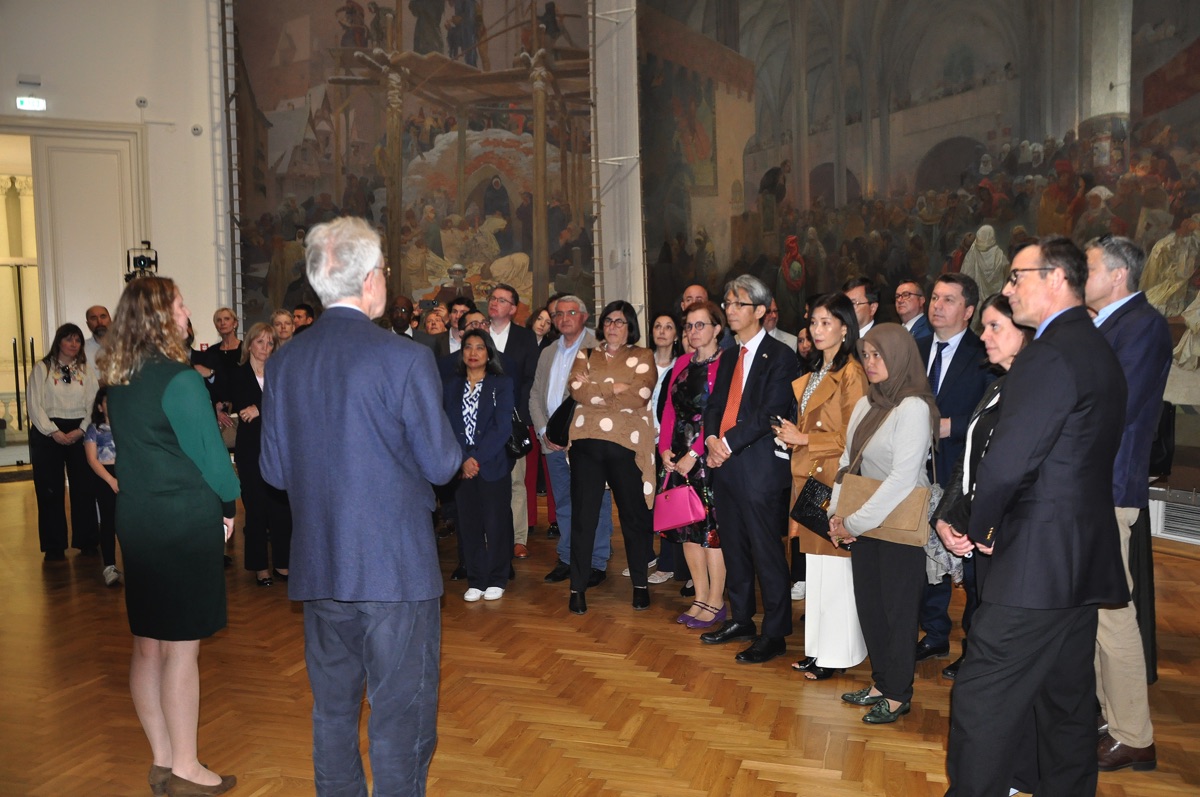
John Mucha guided the guests
In 2024, the Mucha Foundation will present the five-part exhibition “Mucha and Photography: Personal Vision”, the third part of the Mucha Trail series.
The Mucha Trail 2024 exhibition will showcase Alphonse Mucha as a brilliant photographer, and will be a compelling record of the personal life visions of the artist, a true and genuine master of the camera.
In the 1880s, the introduction of technological advances such as lightweight hand-held cameras and gelatine silver made photography a much more accessible medium for amateur photographers. Among the first generation to be inspired by this development was the young Alphonse Mucha. At the time, Mucha was a student at the Munich Academy of Fine Arts and used a borrowed camera to take his first photographs. These include landscapes, street scenes from his apartment window, and portraits of friends.
These photographs demonstrate Mucha’s interest in capturing the busy life that surrounded him. Mucha’s photographic output grew dramatically in Paris, especially in the period after he purchased his first camera in the early 1890s. Photography became an everyday affair for him, not only to document his studio models and to supplement his preliminary sketches, but also to experiment with light and shadow and to explore new ways of looking at the world. During this period, Mucha also began to create staged photographs for his book illustrations, with his friends and models posing as characters in stories. This section of his photographs forms an important part of his artistic legacy and demonstrates his theatrical approach to his work, which culminated in his late masterpiece, The Slav Epic.
Today, the Mucha Foundation holds approximately 2,500 of his photographs. They have survived as period prints or as negatives on glass plates/celluloid, and cover an extremely wide range of subjects: not only studio models, images of his family and friends, portraits, landscapes, and nature and architectural studies, but also documentary and staged photographs (mise-en-scène).
The curator of the five-part exhibition is Tomoko Sato, who is responsible for all of the Mucha Foundation’s major exhibitions and projects over the past 30 years – not only in the Czech Republic but also worldwide.
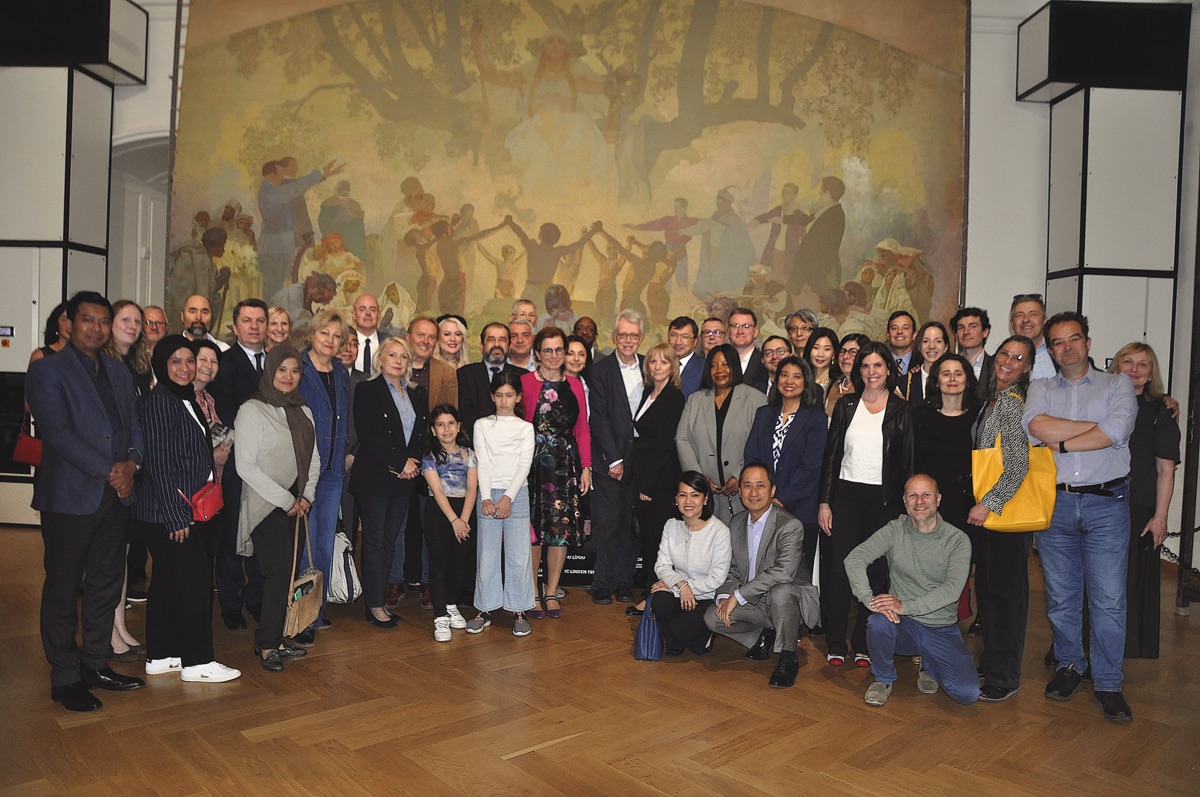
Ambassadors to the Czech Republic with John Mucha as their guide
In the opinion of John Mucha’s family, she is the most important expert on the life and work of Alphonse Mucha in the world. Tomoko Sato graduated from the University of Manchester, and is based in Cambridge, United Kingdom.
It was an unforgettable event.


